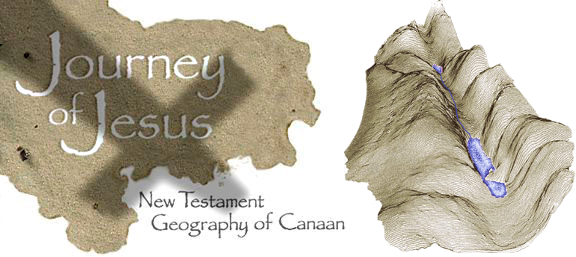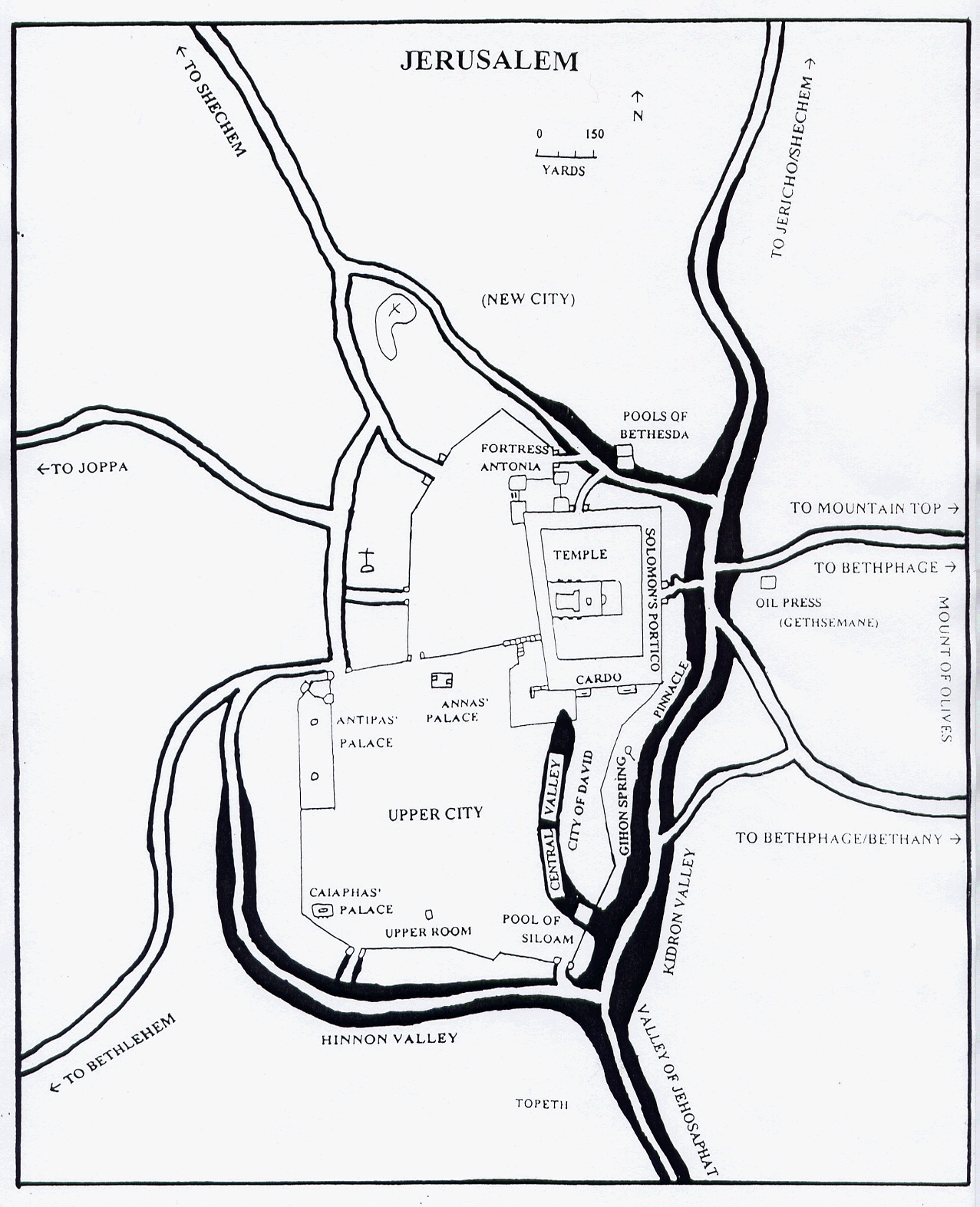95 – The Christ Appears to Stephen
Where: Palace of Caiaphas, Jerusalem, Judah
Scripture:
Notes:
Listen to audio
In the weeks since the Resurrection, the Apostles and disciples continued to meet regularly and attend the Temple. The Christ appeared to over 500 disciples at one time and personally to James. In that same time, the Apostles and disciples from Bethany had returned to Galilee and to work, until The Christ appeared to them. Then Peter led them to return to Jerusalem.
Upon their return to Jerusalem, the Apostles and disciples had met often in the upper room where they shared what had been happening. All got more and more excited as they began to piece together how The Christ was leading them.
Then, on the morning of the 40th day after the resurrection, The Christ led them up onto the Mount of Olives and was taken by God. But the Apostles and disciples continued to meet in Jerusalem and await the promised gift of the Holy Spirit.
Led by Peter, the Apostles let God select Matthias as the twelfth Apostle, replacing Judas Iscariot. Then on Pentecost morning, Saturday May 26, the Holy Spirit appeared like tongues of fire above the heads of the gathered Apostles, fulfilling the prophecy of Joel. And the Apostles proclaimed the good news to all who were gathered, in the language that each understood best. And 3000 were baptized.
Within a week, the Apostles were beginning to proclaim the good news among the Jews around Jerusalem. Peter and John were even bold enough to heal a lame man, in the name of Jesus, just inside the Beautiful “Shushan” Gate under the Portico of Solomon on the east side of the Temple complex where Jesus used to teach. Then, as they boldly attributed this healing to Jesus, they were brought in for “questioning” by the religious authorities. They were warned to stop proclaiming Jesus as The Messiah and released.
As the Hebrew year ended, the number of Jews that believed that Jesus was The Messiah was increasing. These “Messianic” Jews believed in obeying the Mosaic Law (so long as it did not violate the commands of The Christ) and following the traditional forms and festivals of Judaism. But they believed that God had sent The Messiah and fulfilled the prophecy of establishing a new covenant where love balanced law and established justice.
But while the number of Messianic Jews increased under the twelve Apostles, by the summer of 31 AD the number of “Hellenistic” Jews, that also believed that Jesus was The Messiah, was exploding. These Jews spoke Greek and had assimilated Greek culture while remaining true to their Jewish heritage. Their numbers had increased so fast that they had formed their own synagogues.
As the winter of 31 AD approached, the religious authorities in Jerusalem began to consider these two groups as a new Jewish sect [like the Essenes], and had begun to look for ways to show their disapproval. Thus, in September of 31 AD, the religious authorities cut off financial assistance to the widows of the followers of The Way.
Once again the Holy Spirit acted to guide the growing “Church”. United in the Spirit, believers organized their own collection for the widows and many believers came to believe that most of the resources of the brothers and sisters “in Christ”, could be used most effectively if the Apostles would manage the funds. And the funds were donated by all who had extra. Some even sold extra property in order to help the widows get through the winter.
But the growth of this “sect” was alarming to the religious authorities. Finally they took action. They arrested Peter, as the recognized leader, and as many other Apostles as they could catch, while they were proclaiming the good news under the .
After being questioned, they were put out of the Sanhedrin chambers. The consensus of the Sanhedrin was that they should be killed as they had killed Jesus, however one member, Gamaliel, counseled caution. If God did not direct the movement, then it would fail. “Be patient!” he counseled them. So Peter and the disciples were threatened with death, warned to stop telling the people that Jesus was The Messiah, and then they were flogged and released.
But after a few months the Apostles use of funds seemed less then perfect. Apparently the Apostles were more generous with the widows of the Messianic followers and less generous with the widows of the Hellenistic followers. It was decided that the twelve would continue to minister to the Messianic followers but that seven would be chosen to minister to the Hellenistic followers. Seven were chosen because they were reminded of the time when the 4000 were fed, and that there were seven basketfuls left over.
In the spring of 32 AD, the situation got hot. Stephen, one of the seven who ministered to the Hellenist followers, was convincing a large number of Hellenist Jews that Jesus was The Messiah. That sparked a violent reaction by the conservative Hellenist Jews who followed the Torah and the Temple observances and did not believe that Jesus was The Messiah.
Steven was brought to the Palace of Caiaphas “for questioning” by the religious authorities, and charged with preaching that there should be serious changes in the way the Torah was understood and administered, and that the Temple observances should be eliminated. The charges were perceptively accurate (after all, Jesus had proclaimed a spiritual kingdom, without the need of a Temple, and that the kingdom would be based on faith in God, and not obedience to an external law).
Stephen’s defense was to show that the history of Israel was guided by faith (belief despite appearance) and that the Temple cult was no longer the guide to determine how God was to be worshiped. Then Stephen concluded by reminding them forcefully of the choice they had made when they had Jesus executed by the Romans.
At that moment, Stephen had a vision. And The Christ revealed himself to Stephen. The Christ was standing beside the throne of God, in a position of authority. “Jesus IS The Messiah! I see him beside the throne of God. You have killed an innocent man. You will be held accountable.”
The “righteous anger” of the crowd boiled over and a near riot began. The crowd grabbed Stephen, and the religious leaders did nothing to interfere. The crowd dragged Stephen out of the palace and stoned him to death, even as he asked God to forgive them.
One of the witnesses against Stephen was a conservative Hellenist Jew named Saul. He had often argued against Stephen in the synagogue. He had led the conservatives to have the religious authorities deal with Stephen. He had pushed for the trial and he was pleased that, if Stephen would not admit his “errors”, then he should die. So Saul watched over the coats of those doing the actual stoning.
And after the stoning of Stephen, a persecution of the Hellenistic followers of The Way was begun. They were forced to find safety away from Jerusalem. Meanwhile the Apostles and the Messianic followers “laid low” and were not persecuted.
DAB
No questions have been asked yet.

